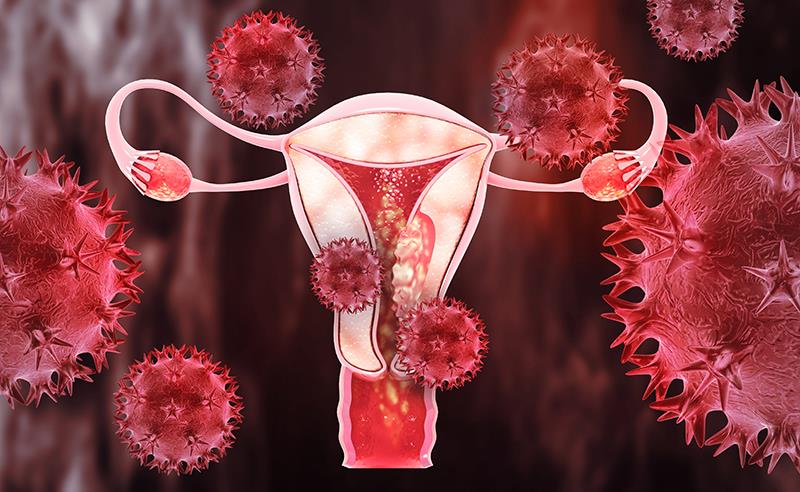Add-on niraparib maintenance confers PFS benefit in endometrial cancer





The addition of a PARP inhibitor (PARPi), niraparib, to dostarlimab plus chemotherapy significantly improved progression-free survival (PFS) among patients with primary advanced or recurrent endometrial cancer, including those with mismatch repair proficient (MMRp)/microsatellite stable (MSS) tumours, according to results from part 2 of the RUBY trial presented at ESMO Gyn 2024.
“In RUBY part 2, we observed that the use of dostarlimab in combination with niraparib in the maintenance therapy setting further improved PFS vs placebo [in this patient population],” said lead author Dr Mansoor Mirza from the Department of Oncology, Rigshospitalet at Copenhagen University Hospital in Copenhagen, Denmark, in a press release.
“These findings are particularly important for patients with MMRp/MSS tumours as the data help build on the initial benefit observed with an immuno-oncology plus chemotherapy regimen, reflecting the potential for the addition of niraparib maintenance to address unmet medical needs for these patients,” he added.
The RUBY trial part 2 included 291 patients with primary advanced or recurrent endometrial cancer who were randomized in a 2:1 ratio to receive dostarlimab plus chemotherapy followed by maintenance dostarlimab plus niraparib (treatment arm; n=192) or placebo plus chemotherapy followed by maintenance placebo IV plus placebo PO (control arm; n=99). [ESMO Gyn 2024, abstract 38M0]
In the overall population, patients treated with dostarlimab plus chemotherapy and niraparib achieved a statistically significant reduction in the risk of disease progression or death by 40 percent (hazard ratio [HR], 0.60; p=0.0007) than those treated with placebo plus chemotherapy at a median follow-up of 21.7 months.
In the MMRp/MSS population, the risk of disease progression or death was significantly reduced by 37 percent in the treatment arm compared with the control arm at a median follow-up of 21.8 months (HR, 0.63; p=0.0060).
Treatment with niraparib in addition to dostarlimab and chemotherapy also led to significantly longer median PFS in both the overall (14.5 vs 8.3 months) and MMRp/MSS cohorts (14.3 vs 8.3 months) compared with placebo plus chemotherapy.
In prespecified exploratory analyses of patients with endometrioid carcinoma, other histologies, and across most biomarker subgroups, dostarlimab plus chemotherapy and niraparib regimen showed a favourable PFS over placebo plus chemotherapy in both populations, Mirza noted.
“Overall, RUBY part 2 met its primary endpoint … and is the first study to show … significant and clinically meaningful improvements in PFS for dostarlimab and chemotherapy, followed by dostarlimab plus niraparib in the overall and MMRp/MSS populations,” said Mirza. “The safety profile observed was generally consistent with the known safety profile of the individual agents.”
“These outcomes demonstrate a potential role for PARPi maintenance in patients receiving dostarlimab plus chemotherapy, in particular for MMRp/MSS disease, [a population with high unmet need],” he added.